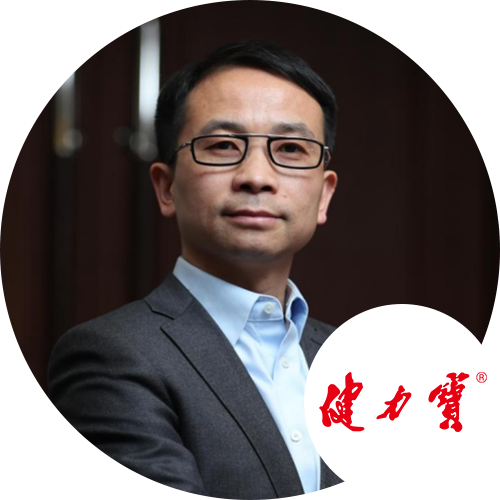
Mr. Tony Fan, Chief Marketing Officer of Guangdong Jianlibao Co., Ltd., holds an MBA from the MIT Sloan School of Management. He is a consumer product strategic brand marketing and product innovation expert with 28 years of industry experience, global strategic vision, and localized practical experience.
During his tenure at Jianlibao, he initiated the brand's renewal project, reinvigorating its youthful image through the "Youth Music Festival". He also leveraged social media trends like "Today's Madness " to spark nationwide interaction and utilized "Totally no real shot" AI technology to create the viral campaign "Let's play China's Spirit together", which won the DMAA Grand Prize. His leadership in new product innovation has contributed to Jianlibao's continuous and stable growth.
As an industry opinion leader, Mr. T Fan has won the "China Outstanding Marketing Figure Golden Bell Award". His career has spanned leading companies such as Master Kong, Yili, and PepsiCo China, where he led the creation of national products with yearly revenue of over 10 billion yuan, such as Master Kong Jasmine Tea, Yili Shuhua lactose-free Milk, and Yili JingDian Organic Milk. He has successfully executed benchmark cases in Olympic marketing and entertainment marketing and served as a final judge for the Tiger Claw Awards and MMA SMARTIES.
In today's era of constant change, the food and beverage market is facing unprecedented challenges and opportunities:
· Behind the explosive growth of popular categories lies intensified competition and heightened product homogenization. Brands are trapped in an "exchange price for volume" dilemma, while anxiety over long-term development is growing.
· The rapid evolution of distribution channels is driving transformations in product development and sales models. China's food and beverage market ecosystem is undergoing high-speed iteration, requiring companies to stay agile amid rapid changes.
· Chinese food and beverage brands are accelerating their overseas expansion, with total exports reaching USD 76.5 billion in 2023. However, independent brands still have limited market share abroad. How to break through the Chinese diaspora and penetrate local markets remains a critical challenge for brand globalization.
In this dialogue, we will revisit classic cases of brands achieving breakthroughs against the odds and look ahead to future industry trends:
I. Long-term Business Philosophy
Calbee achieved a V-shaped rebound in sales of its potato sticks, once on the verge of discontinuation, through "differentiated texture." Kirin’s Namacha succeeded in revitalizing its brand, with sales surpassing 100 million units within seven weeks. Meiji leveraged the "cocoa polyphenol" concept to stage a remarkable comeback for its bitter chocolate products, overcoming a 17-year market stagnation.
These examples illustrate how companies, by tapping into deep consumer needs and integrating technology with creativity, drive qualitative leaps in their products and build enduring brands that can thrive for decades or even a century.
II. Channel Survival Strategies
Brands like Want-Want, Jianlibao, and Baixiang have remained vibrant through different eras, thanks to solid brand building and strong product capabilities. In a fast-iterating channel environment, how can a brand evolve into a resilient Chinese brand? How can it carve out a niche amid fierce channel competition and maintain close ties with consumers?
III. From Product Export to Corporate Globalization
Amos has secured its footing in international markets with fun, multi-sensory soft candy designs; Ajinomoto continues to expand its global presence by leveraging its unique positioning across markets worldwide.
Facing common challenges in third-country markets, how can different types of brands formulate differentiated globalization strategies?
How can food and beverage companies learn through competition and co-create through collaboration? This dialogue will offer new perspectives for the industry, helping brands tackle future market challenges and lead a new wave of global growth.

